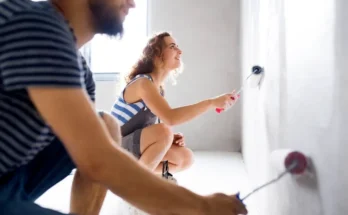Introduction
The drainage and pumping system of your home is something that you should take care of. The good news is that there are many things you can do to ensure that your drainage system stays in tip-top shapes, like choosing the right pipes for installation or using sump pumps. Here are some tips on how to drain water from your home:
Always use the right pipe for installation.
When it comes to installing drainage and pumping systems, you need to use the right pipes for the job. You can choose from reinforced concrete pipes, steel pipes, or PVC pipes. Each type has its advantages and disadvantages, so it’s important to weigh them before making your decision.
For instance, reinforced concrete is stronger than steel but less flexible than PVC (also known as polyvinyl chloride). If a pipe will be moved frequently or come into contact with lots of pressure or heat during its lifetime—like if you have an irrigation system in your garden—a steel pipe may be best suited for this particular situation because it’s less likely to expand or contract over time due to weather conditions or other factors that could cause cracks in your installation material. On the other hand, if you need something more resistant to corrosion than either PVC or steel then look no further than concrete since neither PVC nor steel corrodes easily compared to most other materials (except perhaps brass).
Minimize the chances of clogging.
To minimize the chances of clogging:
- Use a drain screen. These can be inserted into the drain to catch hair and other debris before it makes their way down the pipes. If you’re not sure how to do this, ask a professional plumber such as the plumbing in Auckland for help.
- Use a drain snake. This is a long coil of wire that can easily be inserted into your pipes to unclog them if they become blocked due to hair or other debris buildups. You should only use this method with extreme caution; otherwise, you may cause damage to your pipes and need additional repairs later on down the line. If possible, hire an experienced professional who knows how to use this tool safely for they not only do this job quickly but also do it correctly so as not to create any further problems down the road when using these tools could end up costing more money than simply hiring someone else for these services instead!
Use steel fascia cover
A steel fascia cover is a great solution for protecting the piping from the elements. This cover can be used for both indoor and outdoor use. It will protect your drainage system from ice, snow, leaves, and other debris that could cause clogs or damage to your pipes.
If you have an existing PVC pipe that you want to replace with a steel tube drain system, it might be tempting to simply cut out the old pipe and install new ones in its place. While this method works in some cases (such as when there are only a few feet of PVC piping), it’s usually best if you remove all of the old pipes at once because they may not be properly connected.
Reduce the pressure in the system.
Reduce the pressure in the system.
Reducing the pressure will reduce the risk of clogging and damage to your pump and pipes. Pressure reducers come with instructions for installation, but you can usually install them yourself. You’ll find them by searching for “pressure reducer” on Amazon, or going to your local hardware store and asking for one that’s appropriate for your system (typically, a 1/2″ PVC pipe).
Avoid freezable areas.
You should avoid areas where water can freeze. If your home is built with a drainage system, it means that there are parts of the house where the water goes through pipes and gets drained out. These pipes are usually in the basement or crawlspace of a home, but they can also be placed in higher locations as well.
If you want to prevent freezing from happening in these areas when temperatures drop lower than 20 degrees Celsius, you should make sure that insulation is used throughout them so that cold air does not affect them too much. You can also use heat pumps for this purpose too if desired!
In addition to insulation and heating systems such as heat pumps, it’s also important to have low-flow sinks installed in places such as bathrooms so that less wastewater gets discharged into drainage systems whenever someone uses them – preventing clogs from occurring later down the line due offsetting blockages caused by excess waste accumulation over time.”
Heat Pump for Hot Water
Heat pumps are not just for heating or cooling your home. They can also be used to heat or cool water. This means that you can use a heat pump to provide hot water for the entire house, rather than relying on a tank-less electric water heater or natural gas water heater.
If this sounds like something that would be useful for you, you should consider hiring people like heat pump hot water in Canberra to help.
Use a sump pump.
If you are looking for a way to keep your basement as dry as possible, then it’s best to use a sump pump. A sump pump is a device that pumps water from your basement or crawls space if there is too much water accumulated in them. They are connected to the main drain pipe and will pump out any excess water that has gathered in the pit or space beneath your home. Sump pumps are used by homeowners who want to keep their basements dry while also keeping other areas free from flooding.
Sump pumps are great for keeping the groundwater level at bay, especially during rainy seasons.
Sump pumps are the most common type of drainage pump and can be used for various purposes.
A sump pump is a pump that removes water from a reservoir or pool, such as an aquarium or hot tub. Sump pumps also remove groundwater from swimming pools, spas, and other pools where standing water is present. They may also be used to drain rainwater or surface runoff from driveways into a drainage system or storm sewer. In addition, sump pumps are used in basements and crawlspaces when flooding occurs because they can remove standing water quickly by pumping it back out through discharge pipes connected to drain lines leading to storm drains outside the home




